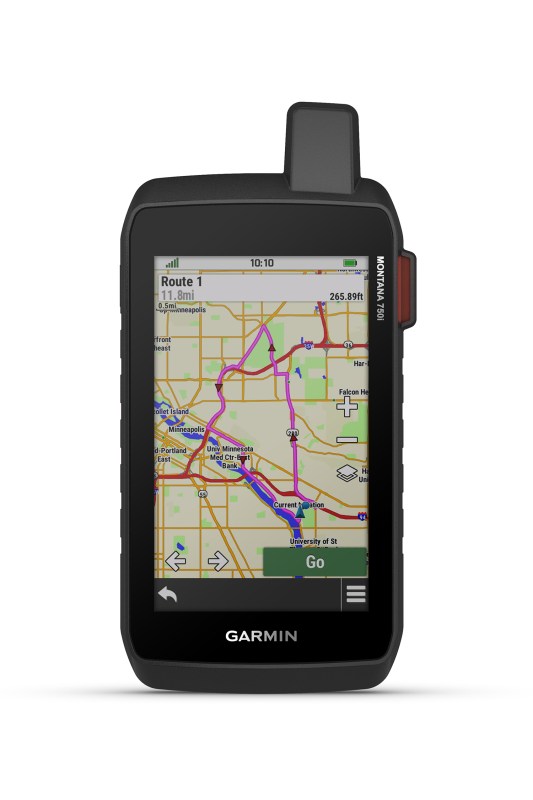Your phone makes a great GPS but it’s not built to be outside, or dropped in puddles or the dirt. Phone screen repair is a big business now because one slip and you’ll be trying to see through a glass spiderweb. Even if your screen is whole, if you’re out of cell reception on a longer hiking or overlanding trail, there’s no way to call for help if you blow a tire, or a knee.
Related Guides
Emergency beacons are great for calling search and rescue but they aren’t two-way. You can’t just text a quick message, “I’ll just be a few hours later than you thought, don’t call the authorities!”
Garmin is one of the few companies out there making dedicated
The Montana 750i GPS is the latest in the line of Garmin GPS with big screens, easy-to-use controls and built-in inReach letting you post to social media or text from absolutely anywhere in the world. If you needed to post to Facebook (or text your partner) from Everest or Antarctica, you could.

Do You Want a Camera, Inreach or Both?
The Montana 750i is actually at the top of the line in a series of three, and comes in at $800. It comes equipped with an 8-megapixel camera and the inReach satellite communicator.
The camera automatically puts map locations in the photos so you can show them on a map, and always know exactly where you took them. Can’t remember where that epic waterfall and secret camping location was from last year? Find the photo and it will show you exactly where it was on the map so you can get back to it.
The Montana 700i ($700) has the inReach built in but doesn’t have the camera and the 700 ($600) is the GPS alone.

It’s Better Than Using Your Phone
Phones have great GPS apps in them, why not just use one of those for
The vibration, dust, water, and shock of being thrown around in the elements just isn’t for most phones. One drop and the screen is gone. Running GPS apps chew through the battery. Many phones can withstand being in the water a bit but being dropped into a puddle on a rock? Probably not.
The Montana GPS has been built to the MIL-STD 810 standard, a US Military Standard for resistance to heat, cold, shock, water, and vibration. Getting rained on? Dropped in a puddle? Attached to ATV handlebars on a rocky trail? All in a day’s work for the Montana.
Battery life can go from 18 hours with basic functions up to 300 hours in expedition mode, all the while sending tracking points over satellite to the web map you shared with your friends and family. How many battery packs does it take to charge a phone for 300 hours?
When you’re off road, the TopoActive maps show the shading of bumps and mountains making it easy to see if that mountain in front of you is Everest-sized or just a molehill. Preloaded public land boundaries show where you can hike and where you might get an angry farmer chasing you off his land. When you get back to the road, switch to car mode to get road directions just like a Garmin Nuvi road GPS.

It Can Save You During Emergencies
The ‘i’ in the Montana 750i and 700i stands for the inReach Satellite Communicator. You can text your friends, post to social media but more importantly hit the SOS button which goes through the inReach emergency center and organizes police or Search and Rescue to come find your lost group. It’s not just a hail Mary pass to the authorities where you hope they get it. You can text with the emergency center with the full touch keyboard for updates and info on what exactly you should be doing. Knowing rescue ETA is two hours can be the difference between calm and a panic attack.
Even if you don’t need the entire Search and Rescue team looking for you, you can still text your wife and let her know everything is fine and you’ll just be a couple hours late for dinner. In fact, you might need help from Search and Rescue if you don’t let her know.



